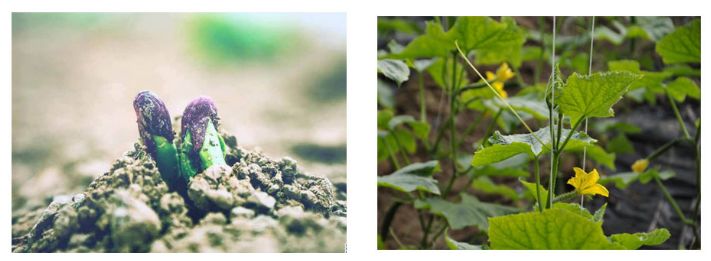Gibberellin has effects on promoting plant germination, branch and leaf growth, as well as early flowering and fruiting. It has a significant yield increase effect on crops such as cotton, rice, peanuts, broad beans, grapes, and also has good effects on wheat, sugarcane, nurseries, mushroom cultivation, bean sprouting, and fruit trees.
Introduction to gibberellic acid
Gibberellic acid, also known as gibberellin, refers to a class of compounds with gibberellin backbone that can stimulate cell division and elongation. It is one of the regulators with significant regulatory effect and the widest range of use at present.
The effect of gibberellic acid:
The most obvious biological activity of gibberellic acid is to stimulate plant cell elongation, resulting in plant growth and leaf enlargement;
Can break the dormancy of seeds, tubers, and root tubers, promoting their germination;
Can stimulate fruit growth, increase seed setting rate or form seedless fruits;
It can replace low temperature and promote early flower bud differentiation in some plants that require low temperature to pass through the growth stage;
It can also replace the effect of long sunlight, allowing some plants to sprout and bloom even under short sunlight conditions;
Can induce α- Amylase formation accelerates the hydrolysis of stored substances in endosperm cells.
Application Technology of Gibberellic Acid
1、 Gibberellin breaks seed dormancy
Lettuce: Lettuce seeds can be soaked in a 200mg/L concentration of gibberellin solution at a high temperature of 30-38 ℃ for 24 hours to successfully break dormancy and sprout early.
Potatoes: Soak potato slices in gibberellin solution with a concentration of 0.5-2mg/L for 10-15 minutes, or soak the entire potato in gibberellin solution with a concentration of 5-15 mg/L for 30 minutes. This can relieve the dormancy period of potato tubers, promote early sprouting, and promote lateral sprouting. The growth of young sprouts accelerates, and creeping branches occur early, extending the swelling period of tubers, and can increase yield by 15-30%. Varieties with short dormancy periods use lower concentrations, while those with long dormancy periods use higher concentrations.
Apples: Spraying a concentration of 2000-4000mg/L gibberellin solution in early spring can break the dormancy of apple buds and have a significant effect.
Golden Lotus: Soaking the seeds in a 100mg/L concentration of gibberellin solution at room temperature for 3-4 days can promote germination.
Strawberry: It can break the dormancy of strawberry plants. In strawberry greenhouse assisted cultivation and semi assisted cultivation, it is carried out after 3 days of greenhouse insulation, that is, when the flower buds appear more than 30%. Each plant is sprayed with 5mL of 5-10mg/L concentration of gibberellin solution, with a focus on spraying the heart leaves, which can make the top inflorescence bloom earlier, promote growth, and mature earlier.
2、 Gibberellin protects flowers, fruits, and promotes growth
Eggplant: Spraying gibberellin solution at a concentration of 25-35mg/L once during flowering can prevent flower drop, promote fruit setting, and increase yield.
Tomatoes: Spraying gibberellin solution at a concentration of 30-35 mg/L once during flowering can increase fruit setting rate and prevent hollow fruits.
Kiwifruit: Applying 2% gibberellin lanolin on flower stalks can significantly reduce the number of seeds in kiwifruit, induce the formation of seedless fruits, and reduce the rate of fruit abscission.
Chili peppers: Spraying gibberellin solution at a concentration of 20-40mg/L once during flowering can promote fruit setting and increase yield.
Watermelon, winter melon, pumpkin, cucumber: Spraying gibberellin solution at a concentration of 20-50mg/L once during flowering or once during young melon growth can promote the growth and yield of young melon.
Precautions for use:
1. Gibberellic acid has low water solubility. Before use, dissolve it with a small amount of alcohol or Baijiu, and then add water to dilute it to the required concentration.
2. The use of gibberellic acid treatment increases the number of infertile seeds in crops, so it is not advisable to apply pesticides in the field.
Post time: Nov-09-2023


